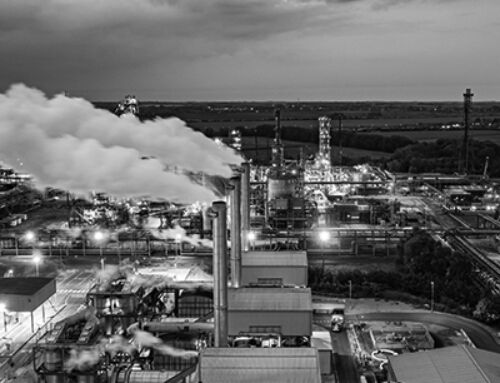It is becoming clear that there is national priority to reduce emissions — the US has committed to net zero emissions by 2050. Shareholders and stakeholders are pushing for greater sustainability initiatives, and businesses are making their own pledges.
Amongst these commitments, there are a lot of terms being used that can seem jumbled and interchangeable. Below, we’ve broken down some of the most common terms and how they can be applied to your business.
The Terms
Science-Based Targets — The Science-Based Targets initiative (SBTi) is a collaboration between CDP, the United Nations Global Compact, World Resources Institute and the World Wide Fund for Nature to show companies how much and how quickly they need to reduce their greenhouse gas (GHG) emissions to prevent the worst effects of climate change. SBTi is becoming the gold standard to set guidelines and validate targets submitted by companies.
SBTi Recommendations are comprehensive, but can be reduced to a few key ideas: set a temperature target, start reducing now, and count everything. Offsets don’t count, and neither do prior reductions.
Scope Emissions — The Greenhouse Gas Protocol (think of GAAP for carbon accounting) sets direct and indirect emissions caused from a company’s activity as well as the upstream and downstream activity related to the supply chain of the products and services provided.
- Scope 1 emissions — the emissions produced at a facility or through equipment a company owns and operates (i.e. emissions from burning fuel, exhaust from company vehicles, etc.). Referred to as direct emissions because they are under the company’s direct control, a facility can impact Scope 1 emissions by improving energy efficiency or fuel switching to less carbon-intensive energy sources.
- Scope 2 emissions — the emissions produced by an energy provider when they generate power to be used at a facility. The more carbon-intensive the power station is, the higher the Scope 2 emissions will be. As an example, a company could reduce its Scope 2 emissions by procuring electricity from a local clean energy system instead of from a natural gas power plant.
- Scope 3 emissions — these are emissions associated with the upstream and downstream supply chain activity related to products or services. These are indirect emissions, as they are not directly under a company’s control, yet they may make up a significant portion of total emissions. Scope 3 emissions include activities such as end-of-life product disposal and excavation & transport of raw materials to a facility.
Net zero — This target declares that an organization has reached a point where its emissions are counterbalanced by technologies and programs that pull carbon from the atmosphere.
The Science Based Targets Initiative (SBTi) released in 2021 is the first science-backed plan developed to help organizations set and reach net-zero status. Under the SBTi, reaching net zero requires that an organization reduces its own scope emissions in accordance with limiting climate change to 1.5° Celsius. To reach net zero, remaining residual emissions not covered in the long-term targets set with SBTi can be offset through investment in different technologies such as Carbon Capture & Storage (CCS).
Carbon neutral — This suggests that an organization counterbalances its emissions through offset or credit programs that recognize carbon removal, avoidance, or reduction from activity at an offsite location. For instance, a heavy polluter could invest in reforestation efforts to become carbon neutral. While reforestation is noble, carbon neutrality does not signify that an organization is taking active efforts to reduce its own emissions. In the future, it’s reasonable to believe that organizations expressing they’ve reached carbon neutrality will not be regarded as impactful or socially responsible as those rising to net-zero status.
- Carbon Offsets come from investments made into sustainable energy that can be used to counterbalance an organization’s own carbon emissions. Supporting projects such as solar farms, wind farms, reforestation efforts, or methane recapture can contribute carbon offsets.
- Carbon Credits are a purchased unit that offer organizations the right to emit a certain amount of carbon into the atmosphere (one credit typically allows for 1 tonne of CO2 emissions). Purchasing or using saved carbon credits allows businesses that have surpassed their allotted pollution amount to stay within regulation.
As more emphasis is placed on limiting climate change and decarbonizing industry, organizations and businesses will be more closely examined on what actions they’re taking to advance sustainability. This will lead to a greater amount of businesses committing to SBTi targets to reach net zero.





